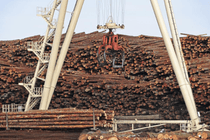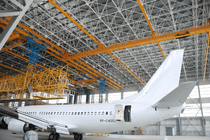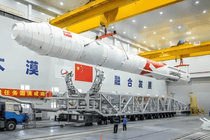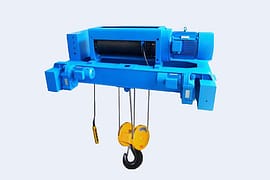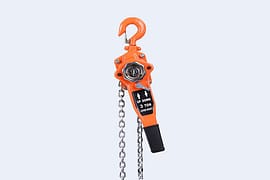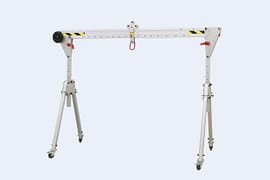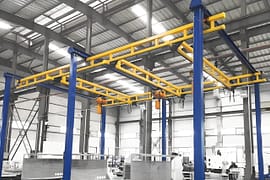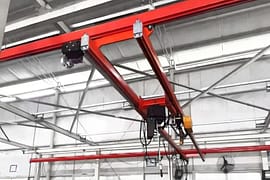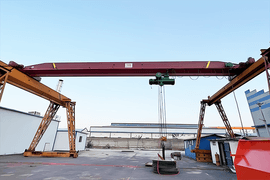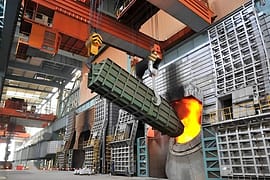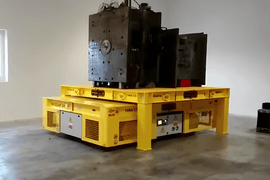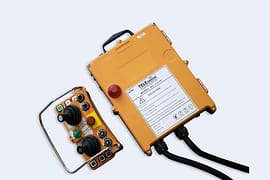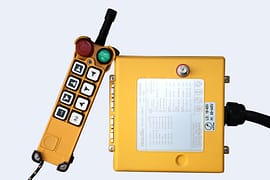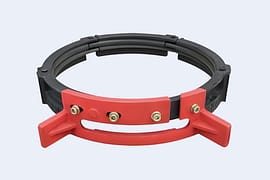Anti-Collision Devices for EOT Cranes: Enhancing Safety and Productivity
Table of Contents
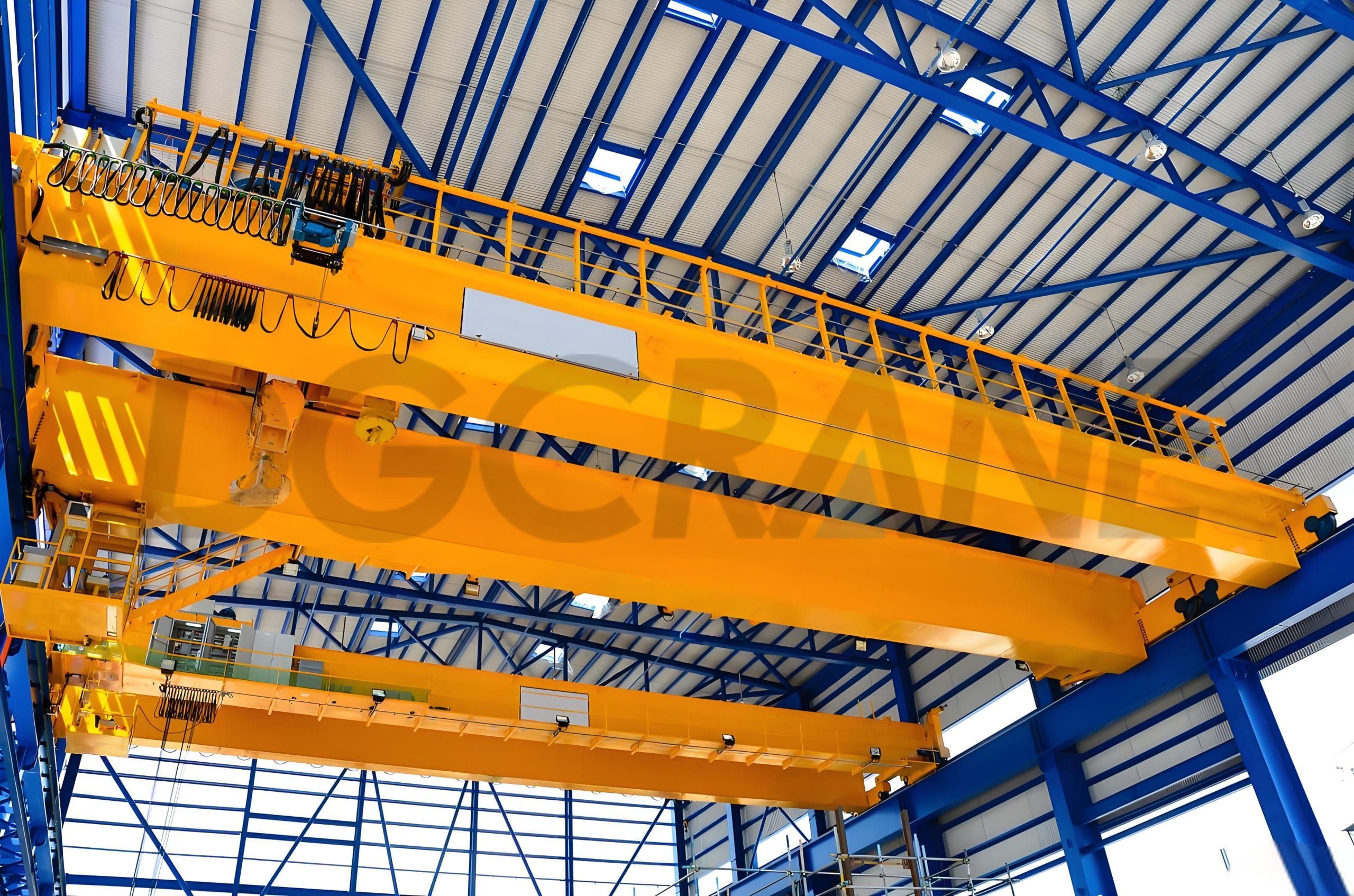
What are Anti-Collision Devices for Cranes?
Anti-collision systems for cranes are intelligent safety protection devices designed to prevent cranes from colliding with other objects or cranes during operation. These systems use sensors, controllers, and other equipment to continuously monitor the crane’s position, speed, and direction. If a potential collision hazard is detected, the system immediately takes protective measures to prevent an accident from occurring.
Why Do EOT Cranes Need Anti-Collision Devices?
With the rapid industrial development, cranes play an increasingly important role in various engineering projects. However, due to their wide working range and complex operations, crane collisions are a common risk. To ensure the safety of operators and smooth production, anti-collision systems for cranes have been developed.
How Do Anti-Collision Devices Work?
The anti-collision device of a crane typically consists of the following key components: sensors, signal processors, controllers, and actuators. Sensors serve as the system’s perception organs, used to monitor environmental information around the crane, such as distance, speed, and direction. Common sensors include laser radar, infrared sensors, cameras, and sonar.
Signal processors handle and analyze the data from the sensors to extract useful information. The controller acts as the decision-making center, determining the necessary anti-collision strategy based on the information provided by the signal processor. Actuators implement the controller’s commands, such as stopping, adjusting speed, or changing direction.
Anti-collision devices employ different sensors to implement various collision avoidance strategies. Below are some common operating principles:
- Distance Detection: Laser radar or infrared sensors measure the distance between the crane and nearby objects and compare it with a preset safety distance. If the distance is smaller than the safety threshold, the controller issues an alert or takes emergency braking actions to prevent a collision.
- Area Restriction: Using technologies like electronic fences or encoders, the crane’s operating area is restricted to a safe zone. If the crane exceeds this area, the controller immediately takes actions such as stopping or reducing speed.
- Height Monitoring: Ultrasonic sensors or cameras monitor changes in the crane’s height. If the crane approaches the height limit or exceeds a safe range, the anti-collision system alerts the operator and takes measures to avoid a collision.
- Speed and Acceleration Control: Sensors detect the crane’s speed and acceleration, adjusting the crane’s movement based on predefined thresholds. If the speed or acceleration exceeds the safety limits, the controller slows down or stops the crane to ensure safe operation.
- Dynamic Path Planning: Based on environmental data provided by sensors, the anti-collision system can dynamically plan the crane’s path. By analyzing the crane’s current position and motion status, the system predicts potential collision risks and suggests alternative collision-free paths.
In summary, crane anti-collision systems use sensors to perceive environmental data and, through signal processing, decision-making, and control execution, ensure the crane’s safety. These systems work by analyzing sensor data and monitoring safety thresholds, issuing timely warnings or taking preventive actions to avoid collisions and ensure safe and efficient operation at the worksite.
How to Improve Operational Safety
Reducing Human Error in Complex Environments
In large industrial operations, such as steel mills, power plants, or shipyards, the complexity of material handling increases the risk of human error. Anti-collision systems can detect nearby obstacles and automatically adjust the crane’s movements, significantly reducing the likelihood of crane collisions that could lead to accidents. By providing early warnings, these systems prevent dangerous interactions between the crane and nearby objects, thus protecting workers’ safety.
Reducing the Risk of Equipment Damage
In heavy industries, even a small collision between cranes or other machinery can cause significant damage, resulting in costly repairs and downtime. Anti-collision systems effectively prevent such incidents, ensuring that operations remain smooth and controllable even when multiple cranes are working in confined spaces. This not only protects expensive equipment but also minimizes potential risks to crane operators and nearby personnel.
Mitigating the Risks of Fatigue
Operating cranes in demanding industrial environments can be physically and mentally exhausting for operators, which can affect their judgment and increase the likelihood of accidents. Anti-collision devices provide an additional layer of safety by acting as a safety barrier when operators’ attention may wane due to fatigue. These systems continuously monitor the surrounding environment, preventing the crane from getting too close to objects or personnel, ensuring safe operation even in challenging conditions.
How Anti-Collision Devices Enhance Productivity
In industrial operations, anti-collision systems play a crucial role in improving production efficiency.
Reducing Downtime and Enhancing Operational Continuity
Firstly, these systems reduce downtime caused by accidents or equipment repairs, significantly improving operational continuity and efficiency. Without anti-collision systems, cranes are prone to collisions that could lead to equipment damage or cargo loss, resulting in expensive repair costs and prolonged downtime. Anti-collision systems can automatically detect and avoid potential hazards, ensuring safe operation and minimizing downtime caused by accidents, thus ensuring the production process remains uninterrupted.
Optimizing Scheduling and Enhancing Operational Efficiency
Secondly, when multiple cranes operate in the same area, anti-collision devices help optimize logistics and workflows. These systems precisely control the distance and paths between cranes, preventing collisions and improving the safety and coordination of operations. Multi-crane operations often involve complex scheduling and path planning, and anti-collision devices can monitor crane movements in real-time, intelligently assign tasks, and facilitate smooth material transport, further boosting overall production efficiency.
Choosing the Right Anti-Collision Device
Selecting the appropriate anti-collision device not only reduces the potential risk of accidents but also significantly improves operational efficiency. The choice of an anti-collision system should consider various factors to ensure optimal safety and adaptability in different industrial environments.


When choosing anti-collision devices for EOT cranes, factors such as plant size, crane numbers, and budget play a key role in the selection process. The market offers a variety of anti-collision systems, each designed to meet specific operational needs. Below is a comparison of different types of anti-collision devices and a selection guide based on various operational environments.
| Type | Working Principle | Suitable Scenarios | Advantages | Disadvantages | Suitable Factory Scale | Suitable Crane Quantity | Budget Range |
|---|---|---|---|---|---|---|---|
| Infrared Collision Avoidance Sensor | Uses infrared sensors to detect relative position and distance, preventing collisions between cranes and equipment. | Suitable for small to medium-sized factories, especially in limited space environments where equipment operates frequently. | Easy to install and low-cost, suitable for environments with low operational risks. | Sensitive to dust and poor environments, may result in inaccurate or delayed reports. Not ideal for companies with high requirements for anti-collision. | Small to medium factories | 1-3 cranes | Low budget |
| Laser Sensor | Uses laser emission to detect the precise distance between cranes and enables quick response. | Suitable for medium to large factories, especially in complex environments with multiple cranes operating simultaneously. | Long-range, high precision, and quick response. Efficient in complex settings, ideal for safety-focused enterprises. | Higher cost, especially for large-scale applications. Equipment maintenance requires professionals. Suitable for environments with strict safety standards. | Medium to large factories | 4 or more cranes | Medium budget |
| Radar Distance Measurement Sensor | Uses radar waves to monitor object movement, ideal for large-scale, real-time monitoring. | Suitable for large factories and complex environments with extreme conditions such as dust, high humidity, low temperature, and vibration. Commonly used in mining, steel, and heavy industry. | Highest detection range, strong adaptability to extreme conditions, providing high safety. | Highest cost, requires regular maintenance and specialized operation. Environmental adaptability may require additional investments to enhance. | Large factories | Multiple cranes | High budget |
In addition to the anti-collision devices mentioned above, there are many other effective safety devices, such as inertial navigation systems and electronic tag identification systems. By selecting and using the appropriate anti-collision devices, the risk of crane collisions with objects can be minimized, ensuring operational safety and reliability.
In conclusion, the correct selection of anti-collision devices is a crucial step in ensuring the safe operation of EOT cranes. By fully understanding the characteristics and applicable scenarios of different devices, companies can ensure safety while improving production efficiency.
Conclusion
In today’s industrial environment, the safe operation of EOT cranes is of paramount importance. Anti-collision devices, as vital safeguards for enhancing safety, play an indispensable role. Through effective sensor technologies and intelligent control systems, these devices are capable of monitoring the crane’s operating conditions in real-time and preventing potential collision risks.
Choosing the right anti-collision device not only reduces the likelihood of accidents but also minimizes equipment damage and repair costs, enhancing overall operational efficiency. In various work environments, companies should consider factors such as device types, applicable scenarios, and budgets when making their selection.
Contact Details
DGCRANE is committed to providing the professional Overhead crane products and relavent service. Exported to Over 100 Countries, 5000+ Customers Choose Us, Worth to be Trusted.
Get In Touch
Fill out your details and someone from our sales team will get back to you within 24 hours!









